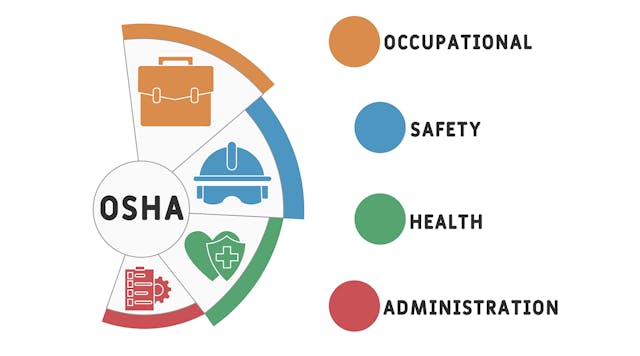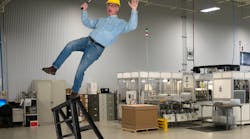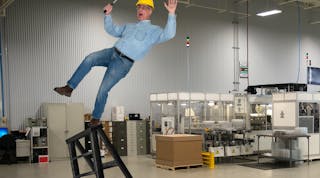Recent advances in the internet of things (IoT) have resulted in an explosion of new products and applications for automation, including smart homes and cities, autonomous vehicles, fastening solutions, remote security and surveillance systems, wearables and other healthcare devices, and smart factories.
Some of the enabling technologies include ultra-high bandwidth Wi-Fi; Bluetooth and other wireless technologies; artificial intelligence and machine learning; efficient and high-density power sources; advanced or miniaturized sensors; and high-precision actuation devices. In an industrial environment, manufacturing engineers are faced with myriad choices for new and emerging robotic products and technologies that provide various degrees of automation.
The decision to introduce factory automation for your joining solutions can be daunting, involving considerable time and expense, and often requires technical skill-sets that a company may not have.
Yet, there are several compelling reasons and some practical considerations to automate manufacturing.
Benefits of Factory Automation
There are several good reasons for introducing automation into the manufacturing process. Although automation can result in numerous benefits, there are usually one or two compelling reasons that drive the decision-making process that should be well understood at the outset.
One of the best arguments for the introduction of factory automation is to improve workplace safety. Certain assembly or machining operations cannot be safely accomplished for a variety of reasons. Some manufacturing operations require operation at extreme temperatures or in the presence of hazardous chemicals. Other operations may require workers to lift or handle heavy or large parts or use hazardous tools. Because of limited space on the factory floor, some operations may require work in confined spaces or in the presence of moving mechanical assemblies. Automation has the power to eliminate personnel from hazardous situations.
Another good argument for robotic manufacturing are tasks that are difficult or nearly impossible to perform without the aid of a machine. These tasks might include the assembly or inspection of miniaturized parts or parts that are too large or bulky, making them difficult to see or handle. Other assembly operations may require the placement of parts that demand a high degree of precision.
Robotic machines can perform repetitive tasks with a high degree of precision and repeatability. Advanced robots that are equipped with machine vision and learning systems can adapt to wide tolerances and part variances to ensure proper placement of components. This can result in high-quality assembly operations and low production waste.
Robotic machines can also run for longer periods of time and can perform many tasks faster than humans. Furthermore, well-maintained robotic machines have less downtime than human operators—they do not call in sick, do not fatigue and do not typically require training. This can translate into fewer manufacturing cells needed to produce a given quantity of a product, shorter production lead times and schedules, and improved availability of manufactured goods.
Each of the previously mentioned benefits, including improvements to safety, performance, productivity, and quality, contributes to reduced labor, material, and operational costs. While lowering production costs is an important consideration and overall goal, it should not be the overriding factor in the decision to automate manufacturing processes, as the introduction of automated production machinery will at first be expensive and may require equipment or process tuning for maximum productivity.
Degrees of Automation
A manufacturing line can incorporate several cells that perform operations that incorporate various degrees of automation, ranging from manual to human-assist (or semi-automated), to fully-automated processes.
In most modern manufacturing operations, there are no fully manual processes, as tools and machinery are used to align or position parts prior to fastening or joining. Manual operations can be enhanced with automatic feeder systems that supply and align parts or fasteners to tools and equipment in a repeatable manner. Human-assist systems are usually robotic systems that are semi-autonomous and require human-in-the-loop interactions. Many of these systems, termed collaborative robots, operate hand-in-hand with their human operators to perform tasks that a human alone cannot perform. Example applications include machine vision systems or adaptive robots that can assist humans by lifting heavy objects.
Fully automated systems are autonomous and perform well on highly-repeatable tasks that require high speed, or on tasks that must be performed in environments that may be off-limits for humans. Because of safety considerations, autonomous robots must be segregated from the human workforce. They are at a disadvantage because they cannot easily be used for tasks that require a significant amount of adaptability, flexibility or skill.
It is important to understand how the current manufacturing cells operate and interact, then extrapolate or model the operation of the manufacturing line after the introduction of automation. In this manner, the entire manufacturing line can be optimized to achieve production, quality and cost goals. For example, the introduction of automation in one manufacturing cell could increase the throughput of parts and assemblies, causing a bottleneck in downstream, slower manufacturing cells. The additional expense would be incurred by modernizing the slower downstream operations or warehousing surplus workpieces.
Introduction of Factory Automation Technology
Since all factories and manufacturing operations are different, there is, unfortunately, no universal methodology for introducing automation into manufacturing. The implementation of factory automation requires participation from several different departments within a factory, and the manufacturing engineer must consider several factors related to facilities and equipment, personnel availability and training, safety, production, and quality goals, and financial and budgetary limitations. The following list describes some important considerations and questions that should be answered to ensure an optimum and appropriate degree of factory automation.
- Safety: Environment, health and safety professionals should identify tasks within the factory that are performed under hazardous conditions or that have a high incidence of injury.
- Difficult tasks: Industrial engineering analyzes tasks that take a considerable amount of time to perform, or involve parts that are too difficult to inspect or process without automation.
- Quality: Identify tasks and operations that often fail to meet quality requirements, or result in a very high scrap rate.
- Repetitive or monotonous tasks: Tasks that are highly repetitive or monotonous might easily be replaced with robots that lower overall production costs and improve accuracy.
- Technological maturity: Ensure that parts and assemblies will not undergo significant design changes or are not obsolescent before savings from automation can be realized.
- Facilities: Plant engineering should identify floor space within the factory to house automated equipment. For completely autonomous operations, especially those involving large, high-speed robots, the factory floor must be completely segregated from humans.
- Personnel: Allocate skill sets among the engineers and technicians who will program and maintain the automated equipment, and reassign or retrain displaced employees.
- Finance: Corporate management should determine budgets, costs and the financial implications for introducing automation.
As evident from the above, the decision to introduce factory automation involves the entire company. As opportunities for automation continue to grow, it becomes incumbent on the manufacturing engineer to stay abreast of automation technology to ensure the optimum and appropriate degree of manufacturing automation that should be introduced. One or more trusted vendors should be identified to help guide the manufacturing engineer.















































































